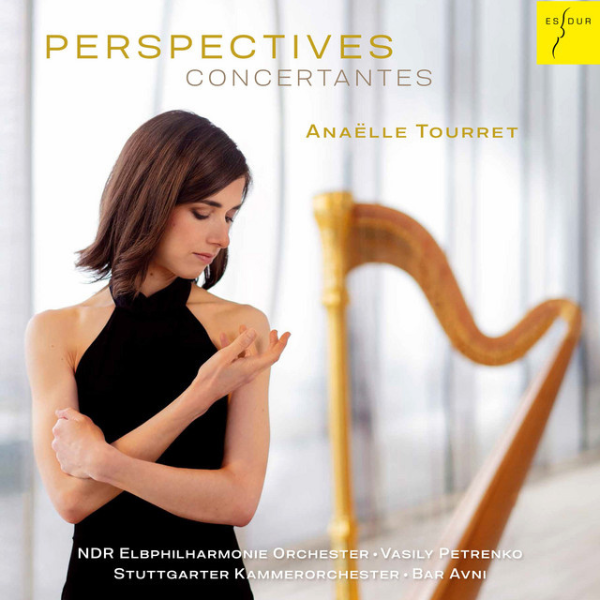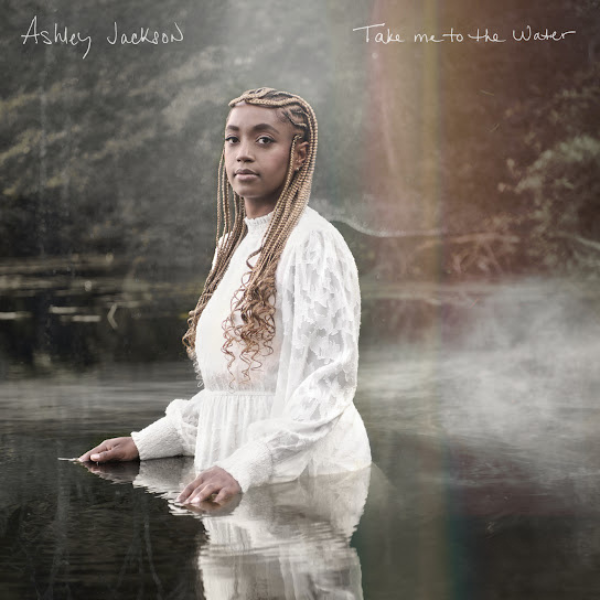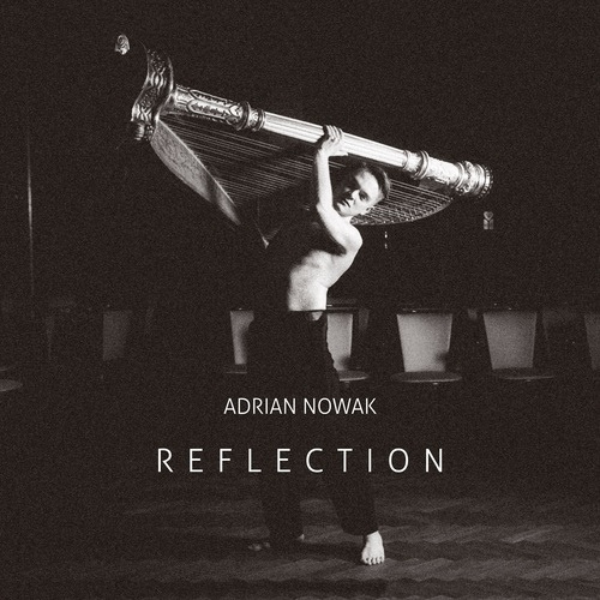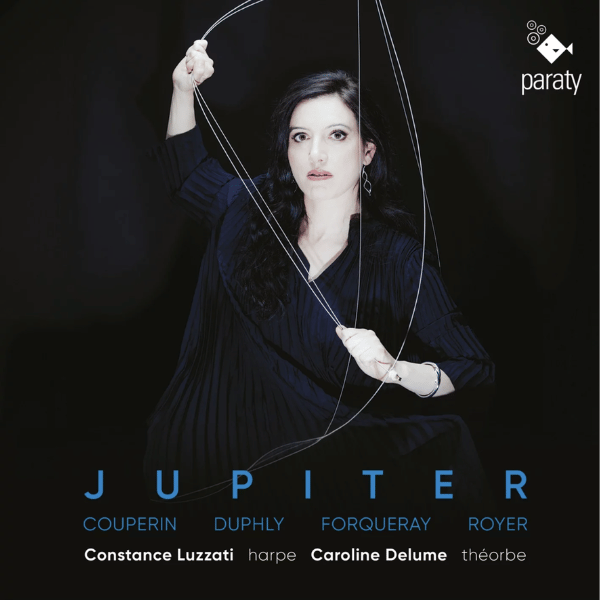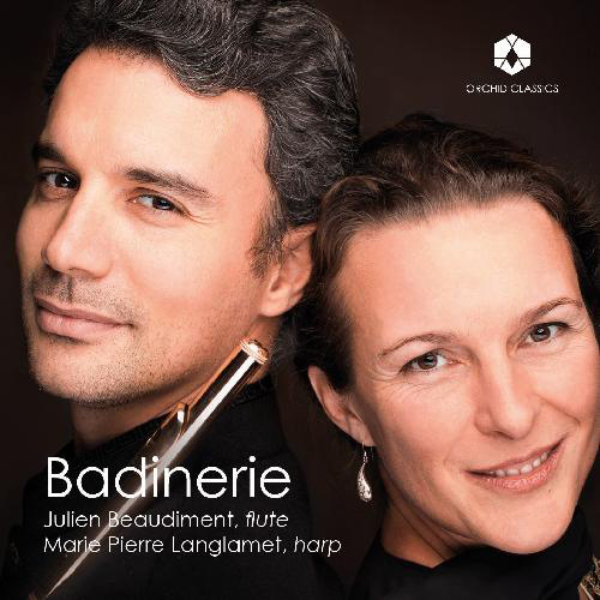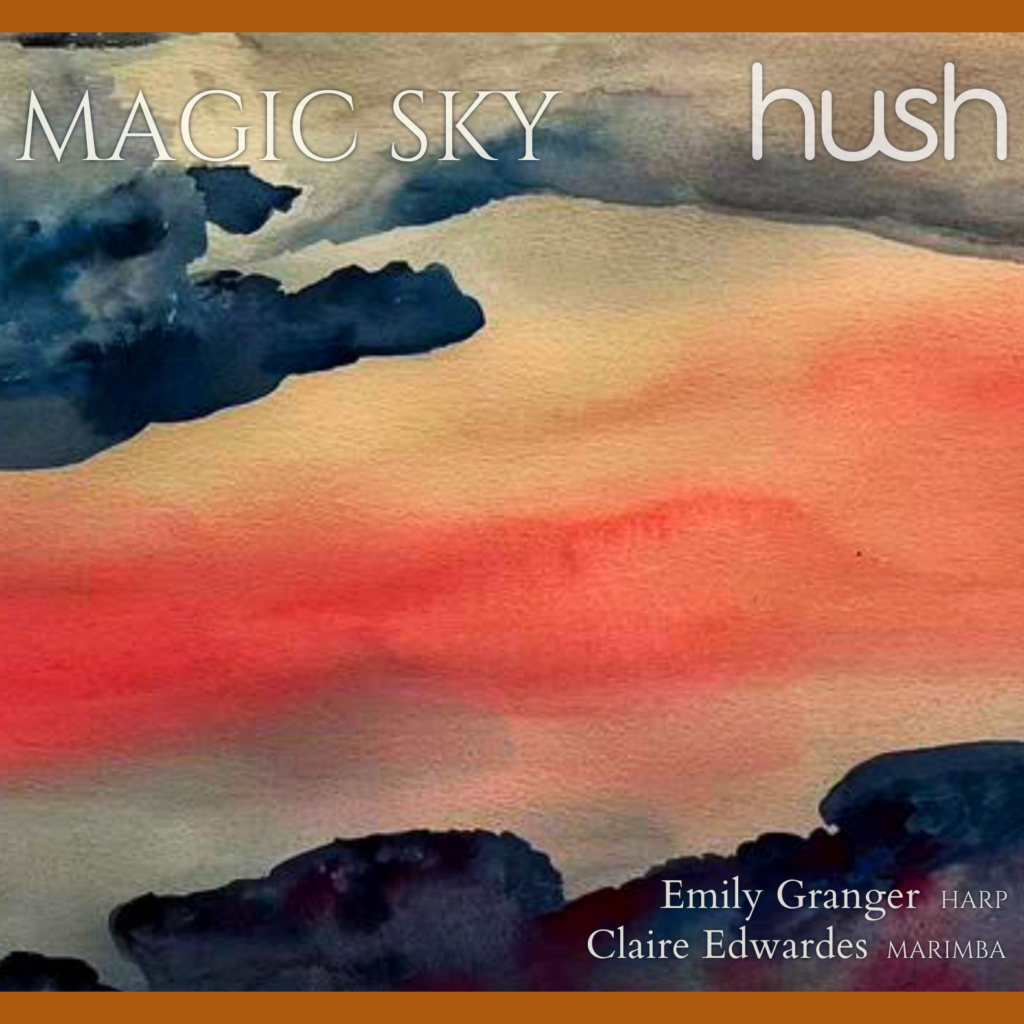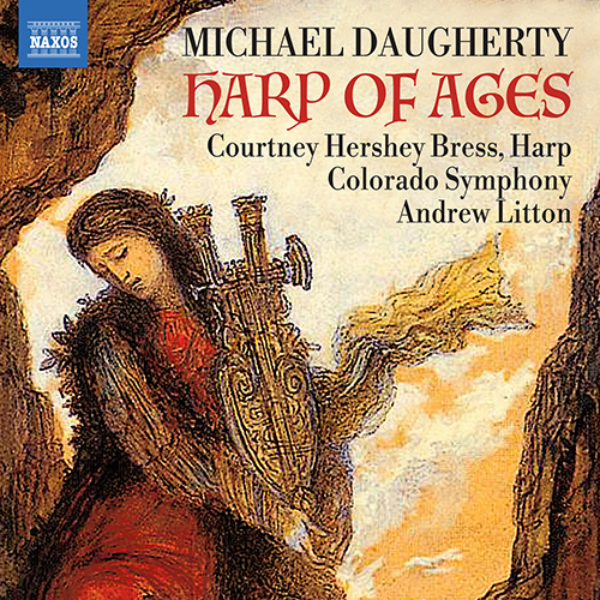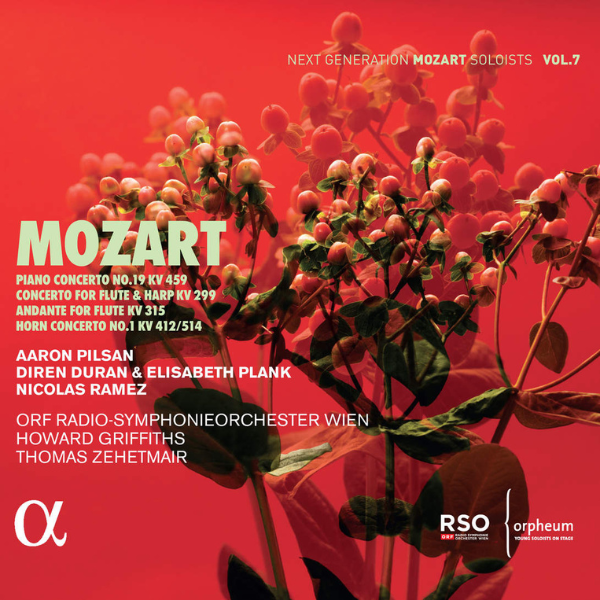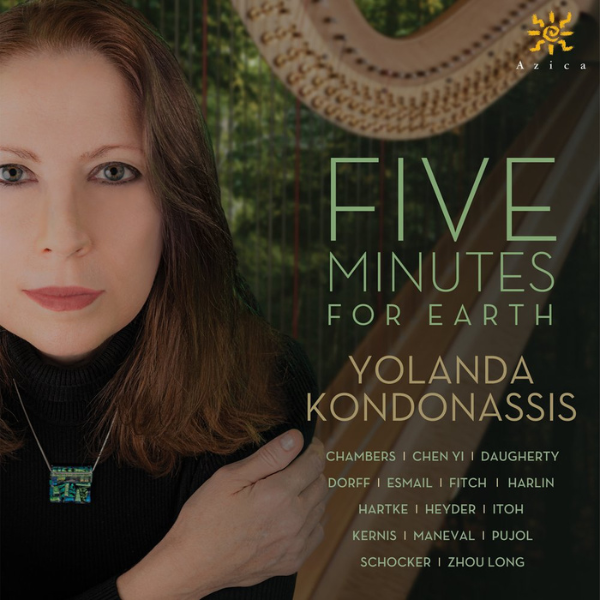
10/10
Yolanda Kondonassis, harp. Azica, 2022.
The premise for Yolanda Kondanassis’ new album is simple: 15 composers writing a new composition for solo harp to depict life on earth—life that appears limited in its current form as the earth heads towards climatic catastrophe. The brevity of the individual pieces heightens the inherent urgency in the crisis, thus Five Minutes for Earth becomes a sort of elevator speech, as it were—abbreviated, condensed, and right to the point.
That’s not to say this music is discordant or jarring simply to make a statement, although there is plenty of spikiness. As the founder of Earth at Heart, an artistic collective focused on conservation through the language of music, Kondonassis is a passionate conservationist and believes that astonishing beauty and the awe it inspires best reaches an audience as opposed to raw data.
Both Aaron Jay Kernis’ On Hearing the Nightbirds at Dusk and Daniel Dorff’s Meditation at Perkiomen Creek win this argument with a rich palette of delicate loveliness, as does Takuma Itoh’s Koholā Sings, a meditation on the extraordinary thrill in watching humpback whales—monstrous creatures that almost appear balletic as they splash to the surface and breach. Kondonassis plays two roles here in a duet of the ocean and the whale itself, a string bending technique becoming its voice, one that’s so alluring, it calls us to listen—maybe even to action.
Reflective in nature is Milonga para mi Tierra, a song to the earth by Máximo Diego Pujol with a brand of longing that’s unique to the Argentine Pampas. Kondonassis engenders a dreamy lyricism from the pulsating guitar-like rhythm. In a similar vein, Hear the Dust Blow by Michael Daugherty draws on extended techniques like whistles, knocks, and gong effects to evoke the vast, destroyed land while still a piece ultimately about hope.
In Zhou Long’s Green, Kondonassis successfully delves into Asian sonorities, conjuring pipa and bamboo flute so full of life, they breathe. Again, the perpetual motion reverberates and buzzes in Time Lapse by Patrick Harlin as well as Gary Shocker’s Memory of Trees, where, with a mere change in hand placement, Kondonassis emphasizes the troubadour song-like quality and its concomitant loneliness. Keith Fitch’s As Earth Dreams is far starker, using the haunting re-tuning effect of scordatura, to which Kondonassis affords just the precise of amount of time to ring, leaving us hanging on a precipice.
Likewise, three works emphasize the power of the harp through themes of disappearing glaciers and what their loss forecasts for our future. In inconvenient wounds, Reena Esmail imagines a tiny crack which will eventually become a skyscraper-sized slab of ice falling into the ocean. Kondonassis expertly navigates gong effects, falling hail glissandos, grinding pedal buzzes, quivering tremolos, and rocket slides that sound the alarm.Philip Maneval takes a different tack in The Demise of Shepard Glacier. He traces a narrative elicited by a series of photographs taken over a century of one of Glacier National Park’s most iconic snow masses that’s retreated so far, it’s no longer even considered an active glacier. The harp is the masterful storyteller, at once full of sorrow, yet still somehow striving for a sliver of hope. Shockingly expansive is Jocelyn Chambers’ Melting Pot, with its full fortes on the very edge of stridency. Kondonassis never shies away from this power, using her instrument not simply for beautiful tones, but to express pain, even anger.
Five Minutes for Earth is a treasure not only for its spectacularly cohesive listening journey, carefully chosen and masterfully performed, but also for the addition of provocative and absorbing new music to the harp repertoire.





